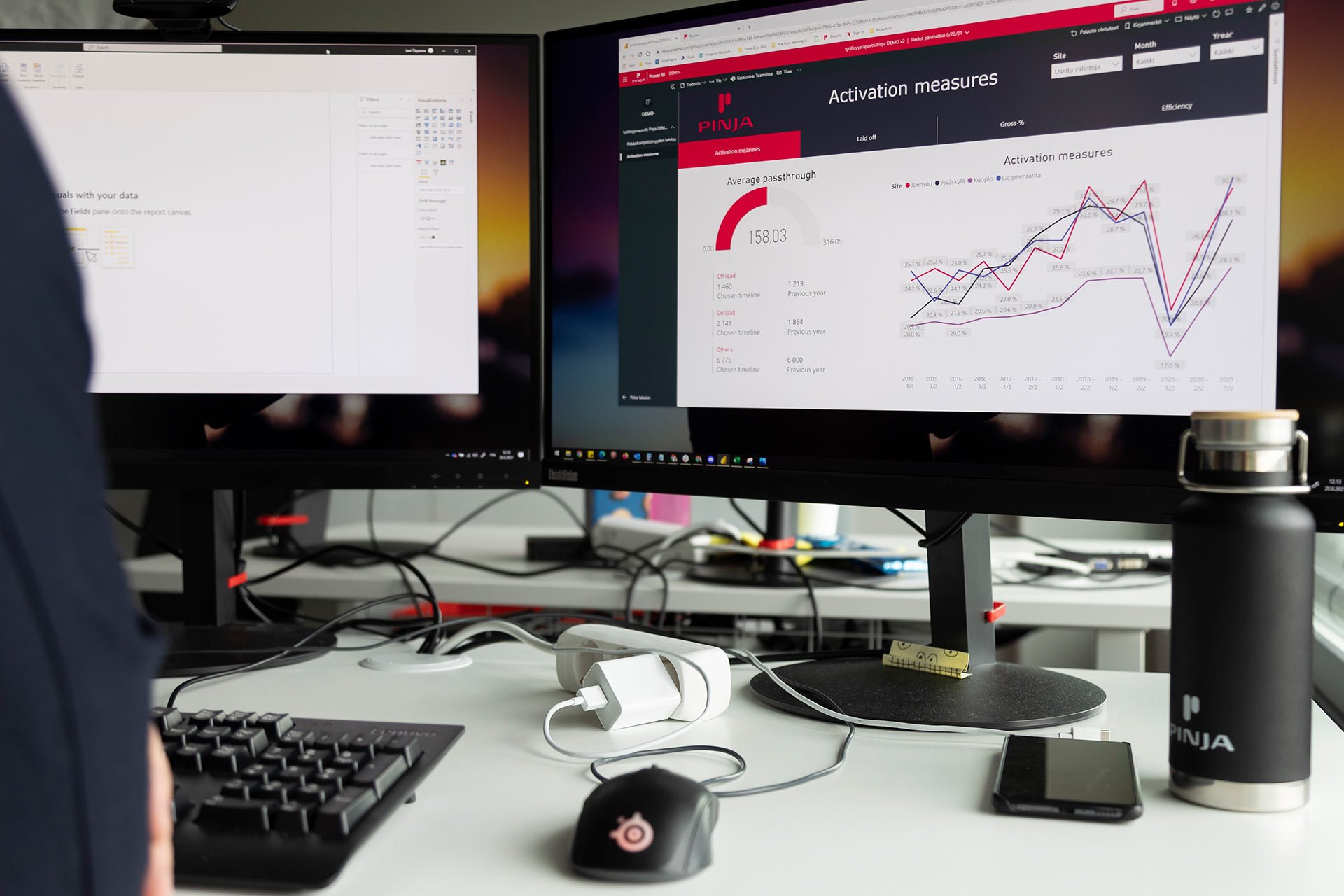
In recent years, there has been a lot of talk about big data, and companies have also realized its importance. When data is transformed into information, and people start to act and make decisions based on the right information, it strengthens the competitive advantage and creates tangible benefits. But there are challenges in making the most of the data – the problem is not the lack of data but that it cannot be processed or used effectively enough. According to a Forrester study, up to 75% of the data collected by companies is not fully utilized.
Challenges in utilizing data
What are the challenges in making the most of the information? Why is the collected information not used more effectively? Most commonly, the challenges are related to the way the company operates, the system as a whole, or people-related processes.
Information is often scattered across many different sources, and it takes time and effort to combine and process it into valuable insights. It requires a lot of manual work and can take an inordinate amount of time. In addition, reporting is often very personalized, which poses its own risks. For example, if one person is responsible for running a complex Excel system for loss tracking in production, the process is easily interrupted in the case of absence.
Manual data collection and analysis can make it difficult to get a true picture of the company’s activities. Management is rarely able to make decisions based on real-time data if reporting relies on Excel.
A culture of working with information produces measurable results
In the future, companies will have to move increasingly from seeking knowledge to acting on it. What does a culture of working with information mean in practice? In simple terms, it means that information is available when it is needed, and is genuinely used as part of the company’s daily decision-making. In this case, the information is the company’s own capital, and reports and indicators have been devised to make use of it in line with the company’s own operating methods. This ensures that everyone in the company speaks the same language.
Visual and clear reports strengthen employees’ understanding of the success of the organization. Shared knowledge fosters self-direction and enables people to see the impact of their work on the whole. Tailored, real-time and comprehensible reports allow you to be truly data-driven in your daily life.
Automating data collection and reporting frees up time to draw conclusions, and a shared vision makes management easier. Knowledge management can also bring significant tangible benefits, for example in the form of cost savings through more efficient production or reduced waste.
Steps towards better knowledge management
How does the transition from seeking for information to working with information take place? I outlined three steps below to help you move towards better knowledge management.
- Identify the current state of reporting and data use in your company. What works, what doesn’t, and what might be missing altogether?
- Identify the target state of the business. How can data be used to achieve competitive advantage? How can the company’s strategy and objectives be translated into clear reports and indicators? What does knowledge capital really mean to you?
- Build a roadmap for knowledge management. What are the steps you will take to reach the target state and new insights? As knowledge and understanding increases, new needs and insights emerge. Working with information is not a project, but a process.
Have you become interested?
If you are interested in the topic, you can read about our customers’ experiences with our Business Intelligence solutions and the benefits of working with data: Betset, a long-standing specialist in the concrete industry, lives in the era of smarter building or the University of Jyväskylä’s knowledge management took a big leap forward with the help of Pinja.
Read more
Aiming for effective reporting – how to move from searching for information to working with information?
Reporting solutions for educational institutions – how to move to genuine knowledge management?

Hanna Salonen
I am a knowledge utilization professional with twenty years of experience in the IT industry and knowledge-based management. The most important thing for me is that the goal set together with the customer is realized, the solution is long-lasting and easy and pleasant to use. My free time is spent e.g. with family, versatile exercise and nature.
Back to the Pinja Blog
Categories
- Career at Pinja (68)
- Manufacturing (48)
- Knowledge Management (45)
- Production Development (44)
- Software Partnership & Tools (42)
- Sustainability (37)
- Wood and Forestry (37)
- Bioenergy and Recycling (27)
- IT Support and Outsourcing (24)
- Ecommerce (23)
- Maintenance (22)
- Artificial Intelligence and Machine Learning (15)
- Public Services (9)
- Compliance (1)